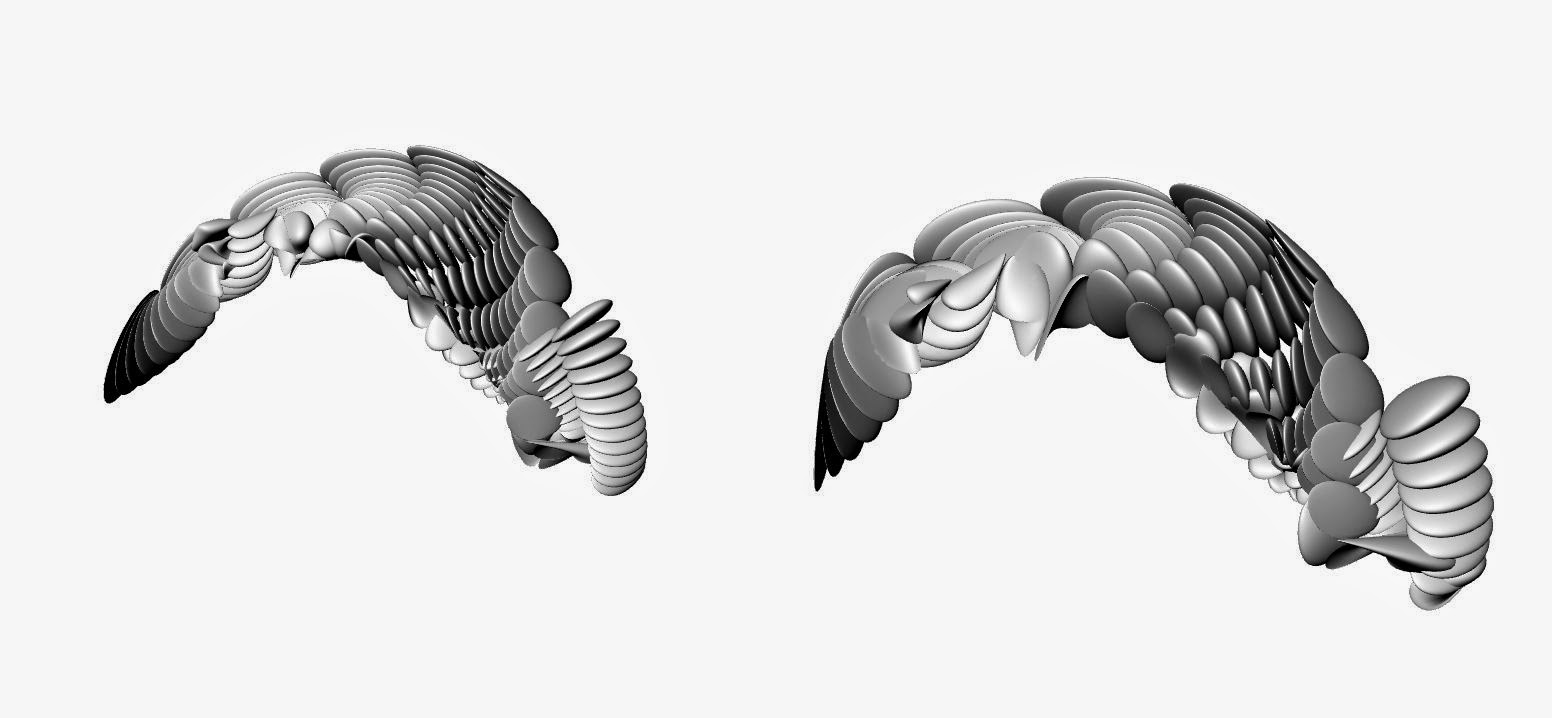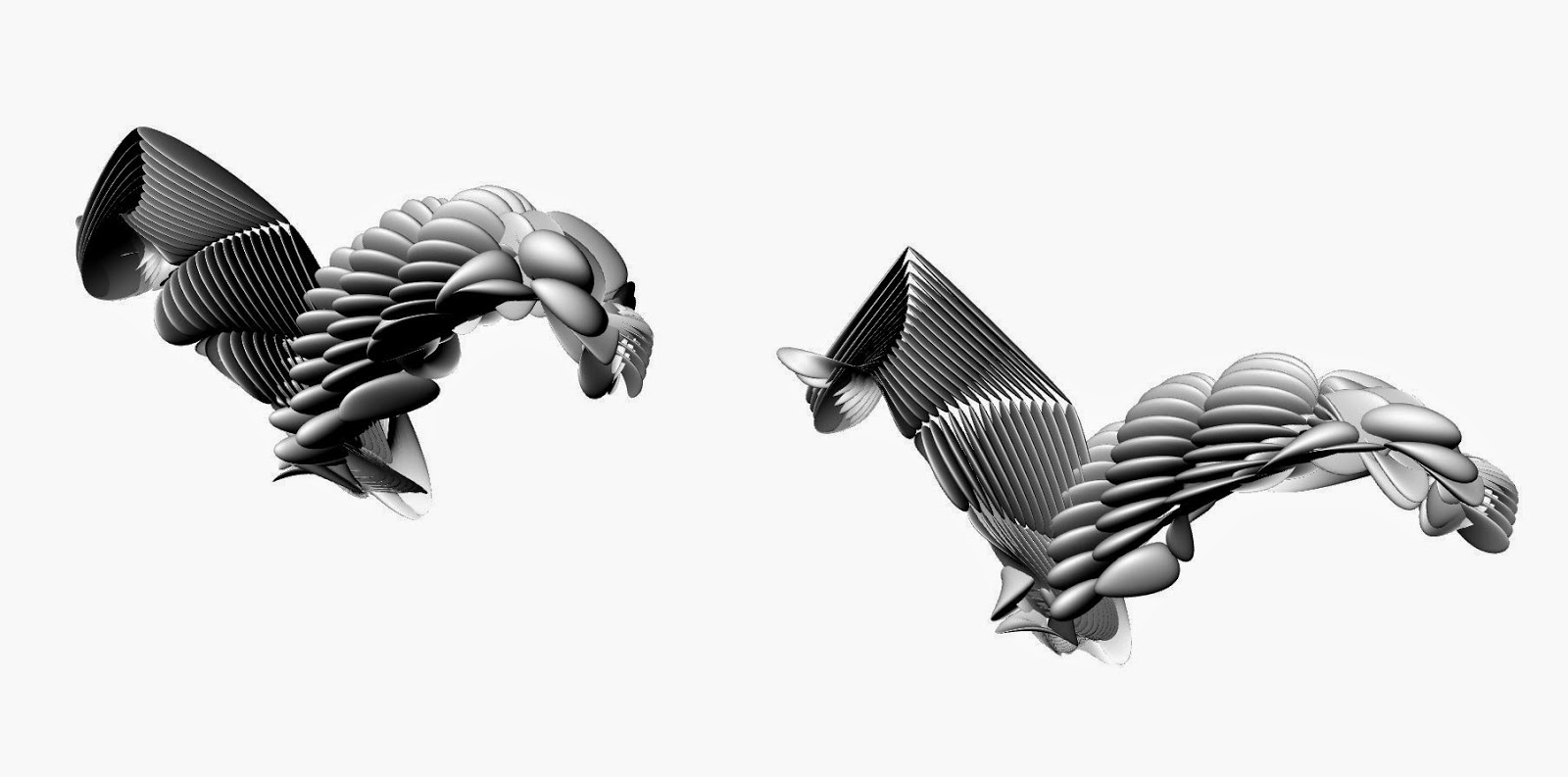Morphed Geometry
As I continued experimenting with Grasshopper, I was concentrating on using my existing surfaces from the motion study and applying a geometry to it. The last attempt used a surface that resulted in a fish-scale looking surface, and this time I used a sphere as my original geometry. These choices were more random than studied, yet the output was still intriguing and allowed me to study how Grasshopper para metrically controls geometry.
 |
| definitions for each surface |
 |
| Iterations of the morphed geometry surface |
As seen in the image above, I captured moments of adjusting the sliders that controlled the U and V values for the division of the surface.
In these two iterations, the left surface has more divisions than the right.
In these two iterations, the adjustments I made were of the direction of the geometry, either above the surface or below.
What was interesting was that the way in which I created the definition, the surface was divided in even increments regardless of the geometry of the surface, rather than being based on the geometry of the surface. This resulted in the applied geometry to be morphed unevenly to the surface. It is almost a battle of geometry. There is: 1) the geometry of the motion surface, which is more complex in some spots than in others, 2) the geometry in how the surface is divided in the U and V direction, and 3) the geometry of the applied object and how it reacts to the divided surface.



















































